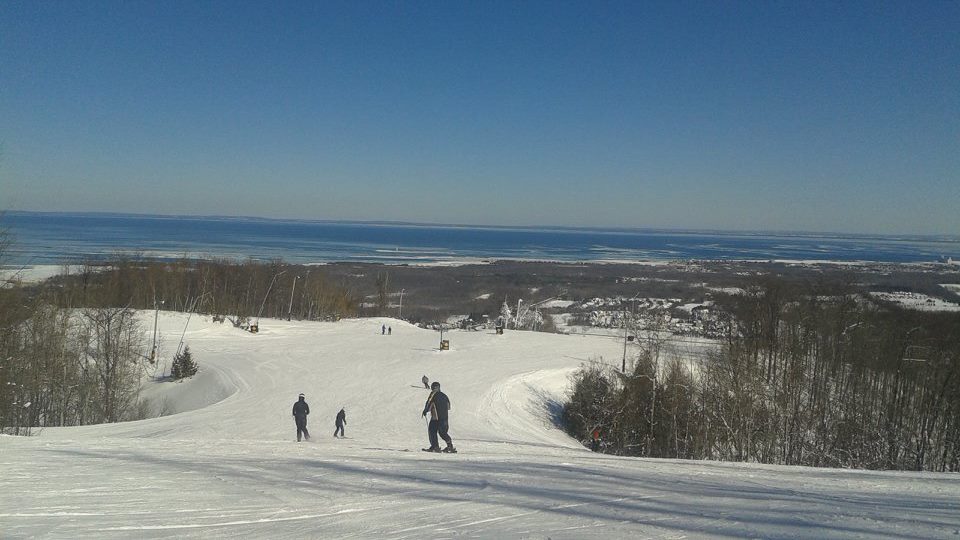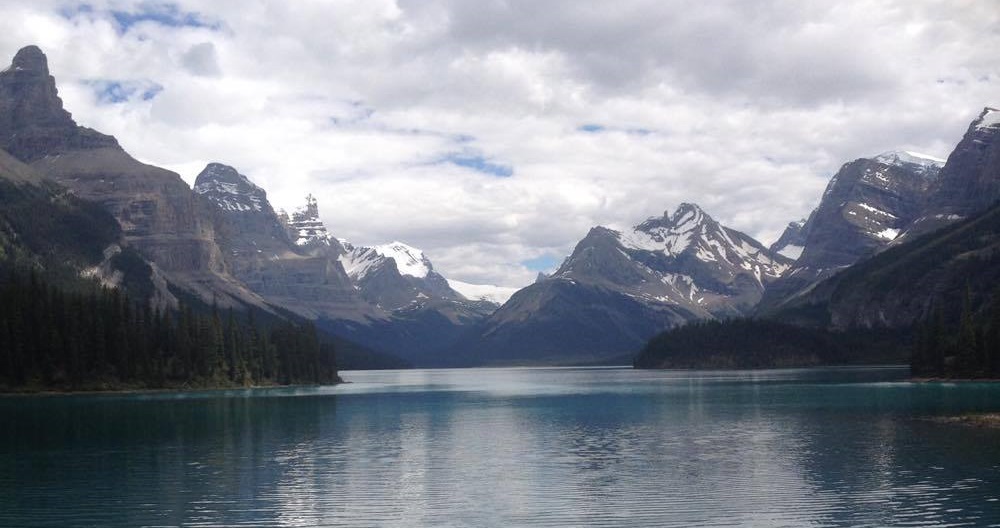A white Christmas is something every child dreams of when growing up, and something that Christmas movies often falsely promise. Cosying up with your family and loved ones round a fire while the snow quiets the world outside is a quintessential part of any effective Christmas advertisement. Unfortunately, in our climate, the white of the snow too often greys into rain and mush. So that’s why last year, in order to satiate my inner child longing for that magical Christmas, I went somewhere where snow is a way of life: Toronto, Canada.
This time last year I was on exchange at University of Waterloo, located about a two-hour drive from Toronto, Canada’s largest and most well-known city (but, fun fact, not its capital, that would be Ottawa). Toronto is an amazing city, it is truly perfect. It has all the amenities you expect of a city of this size with brilliant emergency services, expert Toronto plumbers, brilliant housing, wonderful restaurants and shops. When I explain to someone that I ran away to Canada, a number of questions inevitably follow. How was it? Was it freezing? Did you see a bear? What about Canadian Prime Minister and all-around babe, Justin Trudeau? The answers to the last two questions are yes, I did see a bear, and no, unfortunately not, but I do have a poster.
But how do you explain the minus 30 degrees? How does one explain the snow? When you step outside into the blinding white, the breath gets frozen in your lungs and you can’t breathe without sounding like you’ve just suffered through a 5 km run. Bone-dry hair poking out from your woolly hat immediately forms icicles. The metal of any ear piercings burns with the coldness. Forget about earphones: the wires become stiff and the buds stick into your ear. Fingers in gloves freeze and you may forget completely about feeling your toes from one end of the day to the other. It really makes you wonder why the Canadians bother with it at all. In contrast to the Irish mentality of collectively initiating apocalypse mode the second the ground is lightly dusted with snow, the Canadians, through decades of evolution and adaption, carry on as if the icy depths of freezing hell are but a mere snow sneeze.
Like the humble beaver, the Canadian will construct their dens and/or skyscraper in the heady months of summer with animalistic zeal in preparation for hibernation season. In Canada, there are two seasons: winter and construction season.
They do it, in my humble theory, by adapting the characteristics of their national animal – the beaver. Like the humble beaver, the Canadian will construct their dens and/or skyscraper in the heady months of summer with animalistic zeal in preparation for hibernation season. In Canada, there are two seasons: winter and construction season. Upon completion of the nest, the wild Canadian will retreat underground – in most institutions and cities it is common to find a network of tunnels connecting the buildings to one another. This is how Toronto, a city with a population of six million, copes with the winter. In the downtown area, the Path is an underground network of walkways leading from subway stations to the city’s best-known buildings and even to the CN tower. Combining practicality with rampant consumerism, Path is also the largest underground shopping complex in the world with 371,600 square metres (4,000,000 sq ft) of retail space, more than 30 km long. This leaves ample room for a little-known Canadian sport: mall walking. Mall walkers, usually senior citizens, gather in groups before shops open and then continue to power walk or jog throughout the shopping complexes, occasionally stopping to sit on a bench or purchase a Tim Hortons doughnut.
Like the beaver, the Canadian uses these tunnels to move, live and socialise with their fellow creatures during hibernation season. In the spring they emerge, shake off the icicles and commence “patio season”, migrating from their tunnels to rooftops and decorated decks of drinking and eating establishments to bask in the sunlight before retreating underground again upon the turning of the leaves.
Despite the weather, Toronto is still one of North America’s most multicultural cities. In 2015, just over half of the population of the Greater Toronto Area (GTA) were born outside of Canada. Over a third of homes in the GTA spoke a language other than English or French and host circa 20 per cent of Canada’s overall immigrant population. Little Italy, Chinatown and Little Portugal all reside within a 20-minute walk from each other, each with its own unique personality and pride in heritage.

However, the most unique area of them all without argument is Kensington Market. Originally the Jamaican quarter, Kensington is filled with quaint yet overpriced hipster havens, vintage shops and offbeat art galleries. Colourful murals cover any sign of neglect and fairy lights adorn the side streets in the summer evenings. It is impossible to leave Kensington without having the basic white girl urge to casually pose in front of a 5 ft Bob Marley or the “Carden” – a garden in the shell of a car.
St Lawrence market in the distillery district takes over from Kensington in the winter. Home to Toronto’s Christmas market, the distillery district capitalised on the movement of alcohol production out of the city by turning the factories into markets, bars, museums and clubs. Warehouses are turned into semi-permanent covered markets, adorned with fairy lights, Christmas trees and vendors selling everything from gems to gnocchi. It is not uncommon to see a family emerging from Santa’s grotto and going for sushi. In true multi-cultural Canadian style, most signage and cashiers will chirp “Happy Holidays” or “Seasons Greetings”, and it’s not uncommon to see traditional Christmas decorations next to Hanukah candles and Chinese New Year lanterns.
This multi-culturalism of Toronto, also nicknamed New York’s clean little sister, is reflected in their range of food. You can find Japanese, Vietnamese, Mexican and Lebanese, or food of any nationality you can think of, within a three-block radius in Toronto’s downtown. Fusion food is popular, and my personal favourite is Rasta Pasta, a Jamaican-Italian place in Kensington market. Canadians are king when it comes to comfort food. Poutine, originally from Montréal, is the much-loved national dish. Deceptively simple, composed of chips, cheese curds and gravy, it is a staunch food group in any self-respecting Canadians diet. It can be found everywhere, from food trucks to diners to pubs, and even in Burger King.
Upon visiting Canada, be prepared to recognise that Tim Hortons is not just another coffee chain, but a way of life and as intrinsic to Canadian national identity as hockey and angry geese.
Of course, it would be sacrilege to talk about Canadian food without acknowledging Tim Hortons. Tim Hortons is a coffee and doughnut chain and is to Canadians what tea and chicken fillet rolls are to the Irish. Any fan of How I Met your Mother will recognise that all scenes that take place in Canada, do so in Tim Hortons. Upon visiting Canada, be prepared to recognise that Tim Hortons is not just another coffee chain, but a way of life and as intrinsic to Canadian national identity as hockey and angry geese (seriously though, those geese are evil). Maple syrup is also an essential part of any experience of a Canadian winter. Maple syrup festivals are common nation-wide, as is maple taffy. In order to make taffy, maple sap is boiled just past the point of becoming a syrup and then poured into moulds filled with snow then lifted with a lollipop stick or fork. These are a feature of many households in Canada at Christmas. During Thanksgiving, celebrated in October, pumpkin pie, turkey and warm apple cider are key to the Canadian celebration.
However, is there anything more Christmassy than curling up with a hot chocolate after a day of skiing? Canada is famed for its prowess in snow sports, and skiing and ice skating are weekend activities. Hockey is played by most Canadians at one stage or another, and the big players are given celebrity status to rival the biggest of pop stars. We visited Blue Mountain, arguably Ontario’s biggest ski resort. Modelled after a postcard European village, the resort is purpose built to accommodate the seasonal influx of thousands of locals and visitors. The breathtaking views of Nottawasaga Bay are made even better when accompanied by hot chocolate and a beavers tail – a pastry, not the actual tail of a beaver. Aprés-ski can be found in, of course, the resort’s infamous Irish bar, PJ Byrnes, and the streets are aligned with sports shops, restaurants and even a Subway.
Canada truly is a land of extremes, from blizzards to scorching heat, prairie lands to the Rocky Mountains, it has something for everyone. This is never more evident than in Toronto, a welcoming, open city with more to offer than can be comprehended in a flying visit, even if one has to do a bit of digging to find it.







